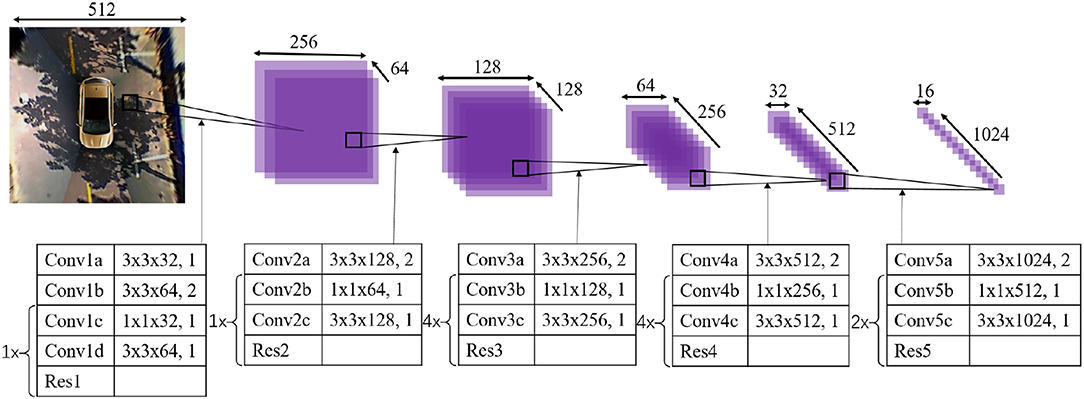Geometric Features-based Parking Slot Detection
Aim of the Project
- Geometric Features-based Parking Slot Detection Tool
- Geometric Features-based Parking Slot Detection Software

Automatic car parking indicator system
General application and Description of the project
It is a CNN-based slot detection method who detect parking slots from calibrated top-view images. Slot detection is achieved by firstly recognize the corner patterns from the image. 3(a) illustrates the examples of detected corner patterns. Since all the corners of a parking slot may not be entirely observable, the parking slots are estimated according. The parking slot marking detection stage recognizes various types of parking slot markings using AVM image sequences. It detects parking slots in individual AVM images by exploiting a hierarchical tree structure of parking slot markings and combines sequential detection results. The parking slot occupancy classification stage identifies vacancies of detected parking slots using ultrasonic sensor data. Redundancy is intentional and enables the use of different subsets of sensors when developing Advanced Driver Assistance Systems (ADAS) applications (e.g. Pedestrian detection, obstacle detection, vehicle following, collision warning, traffic sign recognition, parking slot detection, backup maneuver, collision detection, etc.).
Nowadays in many multiplex systems there is a severe problem for car parking systems. There are many lanes for car parking, so to park a car one has to look for the all lanes. Moreover there is a lot of men labor involved for this process for which there is lot of investment. So the need is to develop a system which indicates directly which parking slot is vacant in any lane. The project involves a system including infrared transmitter and receiver in every lane and a LED display outside the car parking gate. So the person entering parking area can view the LED display and can decide which lane to enter so as to park the car.
Conventionally, car parking systems does not have any intelligent monitoring system. Parking lots are monitored by human beings. All vehicles enter into the parking and waste time for searching for parking slot. Sometimes it creates blockage. Condition become worse when there are multiple parking lanes and each lane have multiple parking slots. Use of automated system for car parking monitoring will reduce the human efforts. Display unit is installed on entrance of parking lot which will show LEDs for all Parking slot and for all parking lanes. Empty slot is indicated by the respective glowing LED.
Working of the circuit and image of the model
IR Sensors are placed inside the parking slot to detect the presence of the vehicle in slot. If the slot is not vacant then a red led will glow under the specified slot number at the entrance of the parking area or else green led will glow. The Arduino takes the data from the IR sensors and compares the received value with the threshold value and accordingly supplies power to the desired led.
Fig. 1: Cardboard Model of Advanced Parking System
Connection for the IR sensors
Fig. 2: Circuit Diagram of IR Sensor
Block Diagram
Fig. 3: Block Diagram of Advanced Parking System
Description of the Circuit
In circuit there are 3 IR sensors are used each at 3 parking slot. These IR sensors are connected to the pin A0, A1, A2 respectively. The led’s are connected at the Digital I/O pins i.e., pin 2 for RED1, pin 3 for GREEN1, pin 4 for RED2, pin 5 for GREEN2, pin6 for RED3 and pin 7 for GREEN3.
When the slot1 will be vacant then IR receiver will not receive any signal. Hence GREEN1 will glow. If any signal is received by the IR receiver then it will be compared to the threshold value and if it is more than the threshold value then RED1 will glow. This process will be similar to all other slots.
Components Required
1.) ARDUINO UNO


Fig. 4: Typical Image of Arduino Uno
2.) IR SENSORS
Fig. 5: Typical Image of IR Transmitters and Receivers
3.) LED RED AND GREEN
Fig. 6: Typical Image of Red LED
4.) Breadboard
Fig. 8: Typical Image of Breadboard
5.) Male-male wire
Fig. 9: Typical Image of Male-Male Wires
6.) Battery
Fig. 10: Typical Image of Battery
Geometric Features-based Parking Slot Detection Tool
7.) Soldering Iron and Wire
Fig. 11: Typical Image of Soldering Iron and Wire
Project Source Code
Circuit Diagrams
| Circuit-Diagram-Advanced-Parking-System |
Geometric Features-based Parking Slot Detection Software
- Cheng K, Chen H (2013) Path following of a fully-automatic parking assist system. Automobile Technol 10:26–29MathSciNetGoogle Scholar
- Jung HG, Kim DS, Yoon PJ, Kim J (2006) Structure analysis based parking slot marking recognition for semi-automatic parking system. In: Structural, syntactic, and statistical pattern recognition, pp 384–393Google Scholar
- Jung HG, Cho YH, Yoon PJ, Kim J (2008) Scanning laser radar-based target position designation for parking aid system. IEEE Trans Intell Transp Syst 9(3):406–423CrossRefGoogle Scholar
- Jung HG, Kim DS, Yoon PJ, Kim J (2007) Light stripe projection based parking space detection for intelligent parking assist system. In: IEEE intelligent vehicle symposium, pp 962–968Google Scholar
- Suhr JK, Jung HG, Bae K, Kim J (2010) Automatic free parking space detection by using motion stereo-based 3D reconstruction. Mach Vision Appl 21:163–176Google Scholar
- Jung HG, Kim DS, Yoon PJ, Kim J (2006) Parking slot markings recognition for automatic parking assist system. In: IEEE intelligent vehicle symposium, pp 106–113Google Scholar
- Schuele K, Raaijmakers M, Neumaier S, Hofmann U (2013) Detecting parallel moving vehicles with monocular omnidirectional side cameras. In: IEEE intelligent vehicle symposium, pp 567–572Google Scholar
- Jung HG, Lee YH, Kim J (2010) Uniform user interface for semiautomatic parking slot marking recognition. IEEE Trans Veh Technol 59(2):616–626Google Scholar